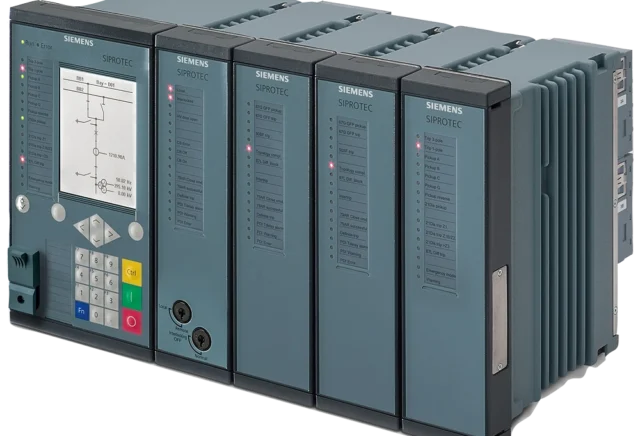Introduction
A High-Speed Bus Transfer Switch (HSBTS) is an advanced electrical switching device used to transfer critical loads from one power source to another with minimal or no interruption. It is typically used in industrial and utility applications to maintain power continuity and system stability during source failures, voltage fluctuations, or maintenance switching.
In the realm of industrial power reliability, High-Speed Bus Transfer Switches (HSBTS) play a crucial role in ensuring uninterrupted power supply during source transitions. Leading global manufacturers have engineered sophisticated HSBTS solutions to support power plants, refineries, data centers, and mission-critical infrastructures. Their designs emphasize rapid switching, system stability, and seamless load transfers.
Leading Manufacturers of HSBTS
Among the industry frontrunners, Siemens has developed the SIPROTEC 7VU85, an advanced device designed for high-speed busbar transfer in sectors like petrochemicals and semiconductor manufacturing. This system integrates smart monitoring features to minimize transfer delays and reduce power disruptions.
ABB, another dominant player, offers the SUE 4000 High-Speed Transfer System, renowned for its versatility across new and existing switchgear installations. It ensures critical loads are switched instantaneously between power sources, safeguarding operations in high-reliability environments.
Meanwhile, Schneider Electric’s ASCO Power Technologies specializes in the 7000 SERIES Medium Voltage Transfer Switch, tailored for high-speed switching in essential services such as hospitals and data centers. The switch’s automatic detection and transfer algorithms ensure power continuity with minimal transient impact.
Beckwith Electric, a division of Hubbell, has carved a niche in motor bus transfer systems. Their solutions cater primarily to industrial processes where high-power motors require seamless source transfers to maintain uninterrupted operation.
Lastly, Eaton, a powerhouse in electrical infrastructure, delivers Automatic Transfer Switches built for flexibility and reliability. These units are widely used in commercial and industrial sectors where power quality and uptime are non-negotiable.
Real-World Case Studies
The practical deployment of HSBTS systems has been extensively documented through technical studies and real-world implementations. A study conducted on power plants analyzed bus transfer transients during safety injection load sequencing, highlighting the importance of a well-coordinated transfer strategy to mitigate voltage sags and transient disturbances.
Another case study, focusing on a new medium-voltage bus transfer scheme for power plants, explored methods to enhance reliability under various bus conditions. This innovative scheme has since been adopted in high-risk environments to ensure fail-proof switching operations.
In industrial settings, a paper on system-based bus transfer solutions emphasized the need for a holistic approach rather than isolated product-based solutions. The study outlined how customized transfer strategies optimize performance, particularly in large-scale power plants and continuous-process industries.
These cases reinforce the critical role of HSBTS technology in maintaining system resilience, reducing downtime, and ensuring operational stability in high-reliability environments.
International Standards for HSBTS
Several international standards govern the design, testing, and application of high-speed bus transfer switches:
- IEC 60947-6-1: Low-voltage switchgear and controlgear - Multiple function equipment - Transfer switching equipment.
- IEEE C37.90: Standard for relays and relay systems associated with electric power apparatus.
- IEEE C37.30.1: Requirements for high-voltage switchgear, including bus transfer switches.
- IEEE 493 (Gold Book): Reliability of industrial and commercial power systems.
- NEMA ICS 10: Industrial control and systems – AC automatic transfer switches.
- ANSI C37.04/C37.06: Standards for circuit breakers that may be used in HSBTS applications.
- NFPA 110: Standard for emergency and standby power systems.
- IEC 62271-200: High-voltage switchgear and controlgear for metal-enclosed switchgear.
Conclusion
High-Speed Bus Transfer Switches are an indispensable component of modern power distribution systems. With industry leaders like Siemens, ABB, Schneider Electric, Beckwith Electric, L3Harris, and Eaton spearheading innovations, the technology continues to evolve, offering enhanced performance, automation, and reliability. Coupled with real-world studies demonstrating their impact, HSBTS solutions remain a key investment for facilities demanding seamless power continuity and system resilience.
